
The artist
Vince Hart
Vince Hart is a UK-based artist who lives and works in London, where he has remained since graduating from his BA in Fine Art at Central St Martins School of Art in 2018.

Step 1
I begin by carefully measuring my surfaces and deciding the borders for the painted area of the work. For this work, I’ve chosen a Winsor & Newton Cotton Smooth Canvas.

Step 2
After measuring the surface, I mark off my borders on small pieces of masking tape to avoid marking the canvas itself, I then line up a ruler with these marks and put down my first layer of tap.

Step 3
I then add offcuts of paper around the taped area to prevent paint from bushing or spattering outside of my marked area. I often use offcuts of watercolour paper; I’ve found this work well to prevent paint from seeping through to the canvas below.

Step 4
Look for the areas of darkness, bright colours, and shapes and block them in.

Step 5
I mix the colours with healthy amounts of Sansodor and Liquin Oleopasto. I choose these mediums as they tend to produce a more matted finish than regular Liquin when dry. I also find glossy surfaces difficult to photograph.

Step 6
For the gradient I use pure version of each colour on either side of the canvas, and with two sperate brushes, I slowly blend towards the middle, applying slightly less paint as I get closer to the centre.

Step 7
Once I reach the centre, I take a clean brush and begin to blend the colours from side to side. I used a Synthetic Hog brush for this as I want the brush marks to remain visible in the work and the coarse bristles do just that.

Step 8
Once finished, I use a scalpel and tweezers to remove the layers of tape and paper. I try to do this whilst the paint is still wet to avoid any paint lifting or pulling from within my borders. The work appears glossy when wet,but once dry should obtain a satin-matte finish.











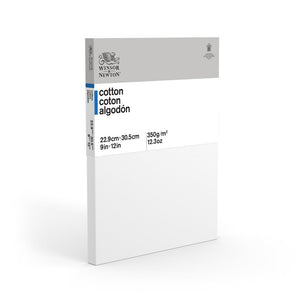


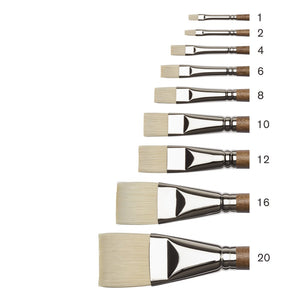
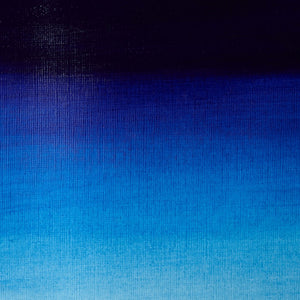
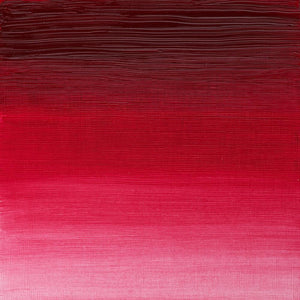
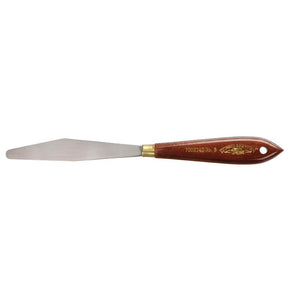
![WN PWC KAREN KLUGLEIN BOTANICAL SET [OPEN 3]](http://www.winsornewton.com/cdn/shop/files/136448.jpg?crop=center&v=1724423264&width=20)
![WN PWC KAREN KLUGLEIN BOTANICAL SET [FRONT]](http://www.winsornewton.com/cdn/shop/files/136444.jpg?crop=center&v=1724423264&width=20)
![WN PWC ESSENTIAL SET [CONTENTS 2]](http://www.winsornewton.com/cdn/shop/files/137579.jpg?crop=center&v=1724423213&width=20)
![WN PWC ESSENTIAL SET [FRONT]](http://www.winsornewton.com/cdn/shop/files/137583.jpg?crop=center&v=1724423213&width=20)
![W&N GALERIA CARDBOARD SET 10X12ML 884955097809 [OPEN]](http://www.winsornewton.com/cdn/shop/files/138856.jpg?crop=center&v=1724893209&width=20)
![W&N GALERIA CARDBOARD SET 10X12ML [B014096] 884955097809 [FOP]](http://www.winsornewton.com/cdn/shop/files/138855.jpg?crop=center&v=1724893209&width=20)

![W&N PROMARKER 24PC STUDENT DESIGNER 884955043295 [FRONT]](http://www.winsornewton.com/cdn/shop/files/78674_d4d78a69-7150-4bf4-a504-3cb5304b0f80.jpg?crop=center&v=1721326116&width=20)

![W&N PROFESSIONAL WATER COLOUR TYRIAN PURPLE [SWATCH]](http://www.winsornewton.com/cdn/shop/files/136113.jpg?crop=center&v=1724423390&width=20)
![W&N WINTON OIL COLOUR [COMPOSITE] 37ML TITANIUM WHITE 094376711653](http://www.winsornewton.com/cdn/shop/files/9238_5073745e-fcfe-4fad-aab4-d631b84e4491.jpg?crop=center&v=1721326117&width=20)
![W&N WINTON OIL COLOUR [SPLODGE] TITANIUM WHITE](http://www.winsornewton.com/cdn/shop/files/131754_19b392ee-9bf6-4caf-a2eb-0356ec1c660a.jpg?crop=center&v=1721326118&width=20)